“Au centre de toute cette culture messianique se trouve une très ancienne tradition tribale arabe intimement entremêlée de mythes païens.”
Vous êtes-vous déjà demandé pourquoi le soi-disant “Moyen-Orient” est l’endroit le plus volatile au monde ? De plus, comment se fait-il que le monde arabe soit le nid de l’extrémisme et de la violence ?
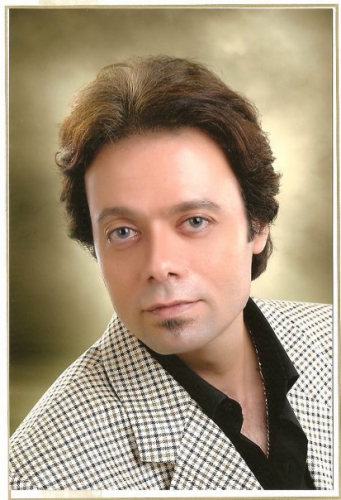 Pourquoi le Moyen-Orient avec ses communautés musulmanes, chrétiennes et juives a toujours été dévasté dans un état de “conflit perpétuel” qui est décidément insolvable et je ne me réfère pas seulement à ces 50-70 dernières années (depuis que l’état juif d’Israël fut fourbement établi), mais à une ère qui remonte à bien longtemps.
Pourquoi le Moyen-Orient avec ses communautés musulmanes, chrétiennes et juives a toujours été dévasté dans un état de “conflit perpétuel” qui est décidément insolvable et je ne me réfère pas seulement à ces 50-70 dernières années (depuis que l’état juif d’Israël fut fourbement établi), mais à une ère qui remonte à bien longtemps.
Mon évaluation de ces troubles permanents remonte aux temps des croisades, à la montée de l’Islam et son conflit subséquent entre le sunnisme et le chi’isme, suivi par des décennies de raids sans merci à l’Est et à l’Ouest de l’Arabie, l’émergence (et la politisation) de l’histoire de Jésus Christ et son martyr et le schisme entre l’église orientale (orthodoxe) et occidentale (romaine) et même plus loin jusque la soi-disante “captivité babylonienne” et le conte fameux de l’exode.
Pourquoi cette zone est-elle, et a toujours été, dans un tel désarroi ?
En fait, le monde arabe identifié sur une carte moderne comme étant le Moyen-Orient et dans les livres d’histoire comme l’ancien Proche-Orient, a toujours été dans un tel tumulte à cause du syndrome du “messie”.
Ne vous y trompez pas sur ses origines, car c’est un pur produit judéo-arabe. Ce qui commença comme une tradition arabe tribale est devenu au fil des siècles une religion talmudique dont l’idéologie (fondée sur le concept messianique) a réussi à infiltrer et à pervertir la plupart des systèmes mondiaux de croyance et de culture avec son extrémisme tribal.
Certains pourront argumenter que les troubles du monde arabe sont justes les mêmes que dans d’autres parties du monde où la violence et les conflits à répétition ainsi que les guerres font juste partie intégrante de la vie. Mais je pense différemment parce que partout ailleurs les conflits éclatent pour différentes raisons, mais au Moyen-Orient (le monde arabe), les conflits et guerres à répétition sont toujours dû à la même raison: le “syndrome messianique”. Peut-être est-ce pourquoi le scénario de la fin du monde est supposé se dérouler sur ce bout de terre aride, comme prophétisé par la littérature messianique noire (apocalyptique).
Même lorsque quelque périodes de paix relative et de prospérité interrompent le cycle de troubles moyen-orientaux, l’idéologie tribale responsable du trouble et de la violence continue de bouillir sous la surface jusqu’à ce que les choses surchauffent et atteignent un autre niveau d’éruption de ce volcan invisible du messie.
Même lorsque les choses semblent être entièrement une conquête impérialiste et une exploitation internationale de la zone. Cela est souvent fait explicitement (comme les croisades médiévales) ou implicitement (comme dans le cas de la dernière invasion américaine en Irak) à cause de l’idéologie morbide messianique.
Tandis que la machine de guerre de George W. Bush démolissait littéralement la nation irakienne et son héritage historique (mésopotamien), l’ancien président américain était euphorique (on pouvait le voir à son rictus idiot) et sa conscience semblait apaisée car il croyait que la destruction qui s’ensuivait et engouffrait tout le Moyen-Orient (jusque maintenant) était le prélude nécessaire et inévitable de la seconde venue du messie. Voilà à quel point est dangereuse, chaotique et annihilante, cette culture messianique.
Le messie: la véritable nativité
Contrairement à ce qu’ont cru pendant très longtemps les orientalistes et les érudits occidentaux, le messie n’a absolument rien à voir avec Jésus Christ ou quelque spiritualité occidentale que ce soit. Cela n’a non plus rien à voir avec le commencement et la fin de notre temps.
Au centre de toute cette culture messianique réside une ancienne tradition tribale arabe entrelacée de mythes païens. Pendant les siècles menant à la naissance du christianisme, des cultes variés connus sous le nom de “religions du mystère” se sont répandus au travers du monde païen.
Au centre de ces cultes du mystère se tenait une histoire au sujet d’un homme-dieu mourant et ressuscitant et qui était connu sous différents noms dans des cultures différentes.
En Egypte, d’où émergèrent ces mystères, il était connu sous le nom d’Osiris, en Grèce: Dionysos, en Syrie: Adonis, en Italie: Bacchus et en Perse: Mithrée. Ces mythes païens furent réécrits et mêlés du thème du messie arabe comme l’évangile de Jésus Christ. Sans ce mélange subtil, la culture messianique arabe n’aurait pas pu infiltrer et prendre racine dans la psychée occidentale et sa spiritualité. Mais pourtant le thème principal était arabe.
Pourquoi croyez-vous que l’apôtre Paul se rendit en Arabie et y séjourna pendant trois longues années afin qu’il puisse oser s’embarquer pour son voyage missionnaire vers le monde occidental / romain?
“Mais quand le dieu qui me sépara de l’utérus de ma mère et m’appela sous sa grâce fut ravi de révéler son fils en moi-même, ainsi que je sois son héraut parmi les nations, je ne me suis pas fait de chair et de sang, ni ne me suis rendu à Jérusalem vers ceux qui étaient des apôtres avant moi, mais je m’en allai en Arabie et retournai encore à Damas (Gal.1:15-17)
Paul n’a pas voyagé en Arabie dans un safari tour ni pour aller y méditer. L’homme bien éduqué et multilingue savait que l’Arabie était la terre culturelle et géographique (native) non seulement du judaïsme mais aussi, incroyable mais vrai, de la doctrine totale de “Nazarenes” ou “Yeshua Natzri” or “Eissa Al Nasrani” en arabe, plus tard latinisé en… Jésus Christ.
D’après sa propre enquête, Paul savait très bien que l’homme qui avait traversé la rivière du Jourdain (depuis sa partie Est) puis se réclama être le roi des juifs à Jérusalem (avant qu’il ne fut tué) était venu d’Arabie et non pas de Palestine.
Paul savait que la vérité au sujet du vrai Jésus ou Eissa en arabe, devait être trouvée en Arabie et non pas en se réunissant avec une équipe de pêcheurs illettrés qui s’auto-étiquettaient “apôtres”.
Et de fait ce fut dans l’ancienne Arabie que Paul collecta les morceaux du puzzle de son évangile (les historiens classiques arabes ont mentionné un vieil évangile de Nazarenes bien avant l’émergence de l’histoire du Christ dans la province romaine de la Palestine, un thème qui est aussi réitéré dans le Coran).
Le mot “messie” est en fait une translitération du mot hébreu / arabe “Mashiach/Mashaiakh/sheikh qui remonte aux temps très anciens de l’Arabie.
En fait, le mot ‘Messiah/Mashiach’ a plus à faire avec le judaïsme et l’Islam (en tant que deux religions des anciens Arabie et Yémen médiévaux) qu’avec le christianisme (en tant que religion composite et hybride qui fut taillée sur mesure d’après le vieux thème juif de Mashiach, mais avec une tournure païenne gréco-romaine).
L’histoire biblique: origine falsifiée
 Dans mon récent livre “Egypt knew no Pharaohs nor Israelites” j’ai élaboré sur les bases culturelles et géographiques communes que partagent à la fois le judaïsme et l’islam.
Dans mon récent livre “Egypt knew no Pharaohs nor Israelites” j’ai élaboré sur les bases culturelles et géographiques communes que partagent à la fois le judaïsme et l’islam.
En retraçant les anciennes racines (arabes) du Judaïsme et de l’Islam, nous sommes arrivés à la conclusion effective (soutenue par des preuves issues de la recherche) que l’Hébreu et les langues arabes sont deux dialectes de la même langue arabe ancienne commune et que le Judaïsme et l’Islam sont le produit de la même culture et géographie arabe (mais à des époques différentes).
Ceci est une base argumentaire cruciale (presque révolutionnaire même pour tout universitaire ou érudit occidental de l’histoire biblique) qui va nous aider à comprendre la complexité de ce syndrome messianique. Ceci est un point clef parce qu’il met en lumière une question qui fut longtemps éludée: d’où provient le Judaïsme en première instance ?
En d’autres termes, quelle est la culture qui a produit cette foi célébrée de Moïse et de ses tablettes des 10 commandements ? Où aboutirions-nous si nous remontions aux racines de la foi judéo-chrétienne ? La plupart, si pas tous les croyants aussi bien que les érudits et les prêtres de cette soi-disant foi judéo-chrétienne répondraient instantanément et sans y réfléchir à deux fois: de Palestine.
Et bien ils ont tout faux. Ils n’ont pas seulement tort sur la Palestine patrie du judaïsme, mais aussi à relier le Judaïsme et le christianisme dans le même sac religieux.
Le Judaïsme n’est pas et ne devrait pas être relié thématiquement et philosophiquement parlant au christianisme (occidental). Le long lien entre les deux religions n’est que de nature politique, grâce aux Romains et leur tentative maligne de soulager la militarisation et la violence des juifs tribaux arabes dont beaucoup avaient déjà migré du Yémen vers la Palestine quelques siècles avant le conte du Christ.
La seule façon qui paraissait possible pour contrôler cette ancienne marée militante du judaïsme (quelque chose ressemblant à l’actuel activisme islamiste, elles partagent toutes deux la même culture tribale arabe) était de la dissoudre dans une nouvelle foi (pacifiste et tolérante) en utilisant et en actualisant le “syndrome messianique” judéo-arabe. Pourquoi croyez-vous que les évangiles furent écrites en grec et non pas en araméen, la langue utilisée par Jésus et ses disciples ? Gardez présent à l’esprit que l’araméen n’est rien d’autre qu’un dialecte de la langue arabe (ne tombez pas dans le panneau de la classification sioniste de ces langages dits “sémites”)
De cette façon, les juifs eurent leur prophétie réalisée, mais cette fois-ci leur nouveau Machiach/Messiah fut latinisé (c’est pour cela que les juifs ont un problème à croire en Jésus Christ). Le nouveau messie, contrairement à un long et ancien héritage de l’activisme militant tribal ancien et à l’intolérance, fut contre toute attente pacifique et acceptait tous ses suiveurs (et pas seulement les choisis) dans son royaume. Mais il y avait un truc à ce niveau là, le changement de paradigme ne s’est pas produit de lui-même.
La bible arabe
Si vous réfléchissiez aux similarités phonétiques entre les deux langues, sous seriez surpris du comment l’hébreu est la langue la plus proche de l’arabe. Dans la prononciation arabe, Hébreu est appelé “Abri” tandis qu’Arabe se prononce “Arabi”, de la même manière “Eloh” et “Allah” sont l’hébreu et l’arabe pour “dieu”.
Donc, au sein de cette toute petite échelle et presque négligeable différence entre “Abri” et “Arabi” et “Eloh” et “Allah”, la toile de fond culturelle commune ARABE d’à la fois le judaïsme et l’islam pourrait et en fait devrait être notre guide pour examiner l’historicité des histoires bibliques/israélites (incluant celle de Jésus Christ), car par essence, c’est là que l’école occidentale de l’histoire biblique a emprunté le mauvais chemin.
Voilà pourquoi primordialement les orientalistes et historiens occidentaux ont jusqu’ici échoué à faire corroborer archéologiquement leurs histoires bibliques là où leur bible falsifiée leur a dit qu’elles s’étaient produites: en Palestine. Leur cinglant échec est dû à leur fausse hypothèse de départ et donc à leur quête déroutée qui s’en suivit.
L’idéologie chrétienne est fondée sur le narratif déformé que le Pharaon était le roi de l’Egypte ancienne et que Moïse fut élevé dans une famille de rang royal égyptien et que l’exode épique partit du royaume païen d’Egypte vers la nouvelle terre promise que dieu avait choisie pour eux, son peuple élu et juste, en terre de Palestine/Canaan. Ceci est basé sur la fausse croyance que Moïse a reçu les tablettes de la Loi sur le Mont Sinaï égyptien ; mais au temps où l’histoire du Christ se développa, il a semblé que Paul l’apôtre fut le seul qui savait vraiment la vérité (après s’être immergé dans le monde de l’ancienne Arabie).
La vérité est que Moïse était un berger arabe et il travaillait comme esclave dans un petit village au sud de l’ancienne Arabie appelé “Mizraïm”. Il partageait le sort de quelques centaines de personnes de sa tribu et non pas les milliers et les milliers qu’on vous donne à voir dans les films hollywoodiens sionistes. L’homme qui régnait sur ce petit village de “Mizraïm” était appelé ‘Faraon/فرعون ’.
Lorsque Moïse tua un des gardes de Faraon, lui et ses gens s’enfuirent de Mizraïm et retournèrent dans leur terre tribale du nord Yémen, une bande de terre aride connue sous le nom d”Asir. C’est pourquoi cette tribu d’esclaves arabes était appelée Asir-alites ou plus connue sous le nom d’Israélites. Une fois de plus, arrêtons-nous ici pour remarquer de nouveaux points de changement de paradigme.
Premièrement, le fait est que le judaïsme est un réel culte tribal arabe qui a pour origine (comme je le détaille plus avant dans mon livre) le nord de ce qui est aujourd’hui le Yémen et donc la croyance centrale du christianisme est bâtie sur une ancienne culture tribale arabe ; la même qui a plus tard produit l’Islam et aussi sur la même culture et tradition littéraire qui a aidé à façonner les groupes islamistes radicaux comme Al Qaïda et également l’EIIL ou État Islamique en Irak et au Levant.
Deuxièmement, l’histoire et l’archéologie bibliques sont littéralement en charpie pour la bonne raison que les histoires bibliques sont introduites dans une fausse géographie des évènements. Falsifier les noms des endroits des histoires bibliques originales fit partie d’une forfaiture à grande échelle, menée par 70 scribes juifs au IIIème siècle av JC à la légendaire bibliothèque d’Alexandrie, dans ce qui devint connu sous le nom de “bible des septantes” ou “bible septante”. Si nous gardons à l’esprit que la bible septante en grec ancien est la “seule source” de toutes les traductions de la sainte bible dans le monde entier (oui, oui même celle qui est sur votre table de chevet ou sous votre oreiller…), nous pourrions en venir à réaliser l’échelle de grandeur de la tromperie (juive) que ces 70 scribes ont répandu sur le monde sous le règne du roi Ptolémée II.
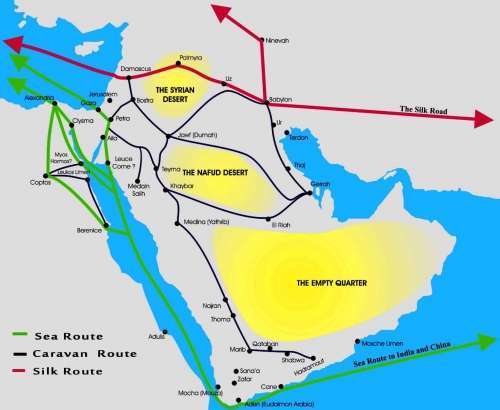
Si nous devions revisiter l’ancien Proche-Orient et réexaminer ses histoires au travers d’un objectif non-juif, nous découvririons avec surprise (comme ce fut le cas au cours de nos recherches) que l’Egypte ne fut jamais la terre de départ de l’exode des Israélites, ni la Palestine/Canaan, leur terre promise.
La Palestine était occupée par une débauche politique occidentale flagrante qui n’aurait pas pu être rendue possible sans la déformation juive de l’histoire de l’ancien Proche-orient.
Ce qui rend ce conflit insolvable, comme mentionné plus tôt, c’est que génération après génération (pas seulement celles des juifs, mais aussi celles des chrétiens et des musulmans), nous avons continué à accepter cette fausse histoire de la Palestine comme “terre promise” et ce pendant les deux mille dernières années. On pourrait avoir une 3ème Intifada et on pourrait en avoir 30 de plus ; on aura un autre accord d’Oslo, et même une autre centaine de pourparlers de paix, mais ne vous voilez pas la face, le problème palestinien ne sera pas résolu à moins que nous n’exposions cette forfaiture et corrigions l’histoire ancienne de cette région.
La véritable histoire ancienne est que l’Egypte n’a connu ni Pharaon, ni Moïse et pour corriger le narratif historique ancien, nous devons vous choquer avec une autre révélation, celle que la Palestine n’a jamais été le témoin de quelque histoire biblique que ce soit. Toutes les histoires relatant les aventures des Israélites (quelles soient fictives ou non), se sont déroulées dans l’ancienne Arabie et l’ancien nord-Yémen, toutes, du déluge et l’arche de Noé et la vente de Joseph comme esclave, jusqu’à l’Exode de Moïse et le soi-disant royaume de David-Salomon.
Ces contes que l’occident connait depuis longtemps sous le nom d’”histoires des patriarches” ne sont que des contes populaires issus de l’ancienne Arabie.
Une autre trouvaille étonnante est que la zone à laquelle tous les érudits et universitaires spécialistes de la bible se réfèrent comme étant Canaan à quelque moment que ce soit dans l’histoire ancienne, cette désignation n’est qu’une déformation, un travesti de la géographie actuelle du Levant et spécifiquement de l’ancienne Palestine. Canaan, dont le nom est répété sans fin dans la bible hébraïque est en fait le territoire de la tribu arabe de Banu Canaan et Banu Kinanah (comme je le montre dans mon livre, cartes à l’appui)
La racine culturelle du messie
D’après l’ancienne tradition tribale arabe, Moïse était un Machiach. Mais la définition arabe de Machiach est tellement différente de la romaine que cela en est venu à déterminer comment nous (principalement les occidentaux) voyons et définissons le mot “messie” aujourd’hui.
Le titre arabe, juif de Mashiash ne veut rien dire de plus qu’un chef de guerre tribal.
Il n’y a pas de connotation spirituelle attachée à ce terme, pas de choix, de nomination, pas de divinité, pas de temple ni de salut. L’addition de ces requis ne prit place seulement qu’après l’hellénisation de l’ancien culte arabo-juif.
Comme l’ancienne communauté arabe était tribale de manière prédominante (et l’est toujours en ce moment même), ainsi la culture tribale de raids et de conquête (comme perpétrée aujourd’hui par Daesh), était la stratégie principale pour obtenir la domination politique. Ceci explique pourquoi la bible hébraïque est remplie de contes de guerres, de raids et ceci explique aussi l’héritage historique et culturel qui motive un groupe militant comme l’EIIL.
Donc, à chaque fois qu’une tribu arabe, et pas seulement les Asir-alites, était subjuguée par une autre plus puissante, le peuple de la tribu rêvait d’un nouveau leader, un Mashiash qui les délivrerait de leur misère et de leur subjugation.
En ce sens, David fut un Meshaiash, un leader tribal, un homme qui mènerait ses guerriers dans un de ces raids sans merci de l’ancienne Arabie, durant lesquels il n’y avait aucune règle morale à l’exception de la survie et de la domination de la tribu à tout prix, même si cela signifiait l’extermination de l’autre tribu et la mise en esclavage de ses femmes et de ses enfants (ce que le monde moderne appelle maintenant un génocide).
Tandis que la sensibilité du monde occidental avancé est maintenant profondément offensée par les raids sauvages menés par l’EIIL/Daesh et leur nouveau Calife/Mashaiash/Sheikh, d’un autre côté, la sensibilité chrétienne occidentale n’a aucun problème avec bien des raids tribaux juifs dont leur bible est remplie. Tous ces raids sanglants étaient menés par les Mashiachs/Messies juifs.
Pouvez-vous percevoir la contradiction ici ? Mais encore plus important, pouvez-vous dire comment et quand commença ce paradoxe qui aliéna le monde occidental de ses propres valeurs culturelles ?
Ceci s’est produit lorsque nous avons renoncé en occident à notre propre ancienne sagesse et connaissance et avons au lieu de cela, souscrit à la culture du messie, un pur produit de l’ancienne Arabie. Et comme la culture ancienne de l’Arabie a toujours été tribale, intolérante et extrêmement violente, Paul l’apôtre, termina son long séjour là-bas après qu’il ait apparement atteint deux conclusions décisives ; c’est le truc mentionné plus tôt.
D’abord, Paul a tourné le dos (éternellement) à l’ancienne Arabie, car il savait que s’il ne le faisait pas, il deviendrait encore le zélé violent et intolérant qu’il fut avant d’être captivé, hypnotisé par l’histoire du fils de dieu. Ensuite, Paul ne pouvait pas voir le Mashiach/Messie au travers de l’objectif hermétique tribal de l’Arabie ; au lieu de cela il garda l’histoire originale arabe et le thème du messie, mais la moula dans la culture greco-romaine de la diversité et de la tolérance (ce qui ne dura pas bien longtemps par la suite…)
Ce faisant, Paul arriva à retourner ce qui semblait être un culte arabo-juif non mitigé de violence sans fin en un message universel de foi qui pouvait satisfaire tous les enfants de dieu et non pas seulement ceux qui étaient circoncis.
Mais de fait, le message de Paul reposait principalement sur le concept arabe du Meshiach/Messie.
Le côté dangereux de cette doctrine du messie est qu’elle est fondée sur le sens tribal arabe de l’insécurité et de la vulnérabilité (dû à une culture militante de raids constants). Cette insécurité a toujours mené les juifs arabes à chaque fois qu’ils étaient subjugués par des raids internes arabes ou même des forces externes comme les Egyptiens ou les Babyloniens à rationaliser leur subjugation comme une punition divine pour leur foi et pratiques imparfaites, comme dans le cas de la “captivité babylonienne”.
Ainsi, les croyants dans la foi messianique se retrouvent toujours dans un état perpétuel d’incertitude quant à leur foi. Chaque mauvaise fortune dans leurs affaires courantes est traduite en une foi imparfaite, corrompue, un sens profond du pêché, qui se manifeste souvent dans la méthode fondamentaliste et dogmatique comme pour les chrétiens sionistes, les chrétiens évangélistes, les musulmans salafistes, la secte de la confrérie des Frères Musulmans, la secte takfiriste, les juifs Heredi et bien sûr les sectes islamiques chi’ite et Wahabite.
C’est lorsque le concept de mashiach/messie/sheikh vient toujours à jouer un rôle. Dans un temps de défi et de controverse, les croyants messianiques (spécifiquement les orthodoxes), inondés de l’incertitude de la rectitude de leur foi courante et de leur conduite, commencent à rêver d’un autre messie, sheikh, qui pourrait les mener sur la voie du juste (le plus souvent sa propre voie…)
Et dans le processus de retourner dans le soi-disant droit chemin de dieu, toujours plus de messies/sheikhs, que ce soit Joseph Smith des Mormons ou le “Calife” Abou Bakhar Al-Baghdadi de l’EIIL/Daesh, émergent et le cycle du dogmatisme, de la violence et de l’extrémisme se perpétue à l’infini.
Dr Ashraf Ezzat
url de l’article original: https://ashraf62.wordpress.com/2015/10/19/the-arabian-mes...
Traduit de l’anglais par Résistance 71


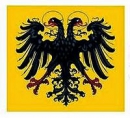
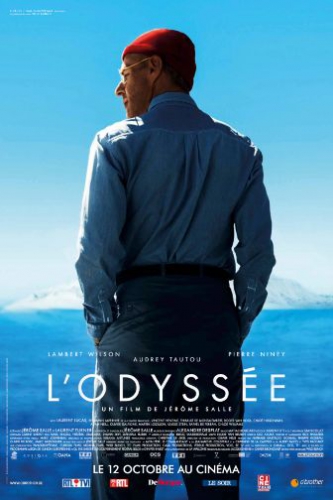 Autour de la figure de Jacques-Yves Cousteau, interprété par Lambert Wilson, L'Odyssée, film de Jérôme Salle, César du meilleur premier film pour Anthony Zimmer, nous entraîne dans trente années qui vont forger un mythe en même temps que changer le monde : 1949-1979. Deux mondes que toute oppose. Derrière l'Odyssée, nous assistons plutôt à une série d'odyssées, celle de la famille Cousteau, celle de la France triomphante des Trente Glorieuses, celle, au final, de l'écologie balbutiante.
Autour de la figure de Jacques-Yves Cousteau, interprété par Lambert Wilson, L'Odyssée, film de Jérôme Salle, César du meilleur premier film pour Anthony Zimmer, nous entraîne dans trente années qui vont forger un mythe en même temps que changer le monde : 1949-1979. Deux mondes que toute oppose. Derrière l'Odyssée, nous assistons plutôt à une série d'odyssées, celle de la famille Cousteau, celle de la France triomphante des Trente Glorieuses, celle, au final, de l'écologie balbutiante.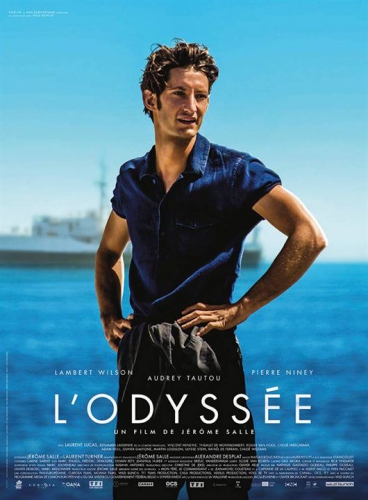 Le rêve Cousteau se transforme ainsi peu à peu en cauchemar pour son équipage et son épouse, attachés à la Calypso, alors que le Commandant se rend dans les soirées mondaines à New-York ou à Paris. La décrépitude de son épouse, qui ressemble de plus en plus à une tenancière de bistrot de province, contraste avec l'allure de son mari, toujours impeccablement habillé, signant des autographes et séduisant les femmes. L'archétype de l'homme français, séducteur et agaçant qui parvient parfois à conquérir l'Amérique.
Le rêve Cousteau se transforme ainsi peu à peu en cauchemar pour son équipage et son épouse, attachés à la Calypso, alors que le Commandant se rend dans les soirées mondaines à New-York ou à Paris. La décrépitude de son épouse, qui ressemble de plus en plus à une tenancière de bistrot de province, contraste avec l'allure de son mari, toujours impeccablement habillé, signant des autographes et séduisant les femmes. L'archétype de l'homme français, séducteur et agaçant qui parvient parfois à conquérir l'Amérique.
 del.icio.us
del.icio.us
 Digg
Digg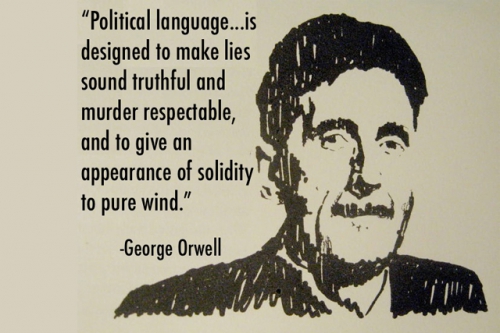
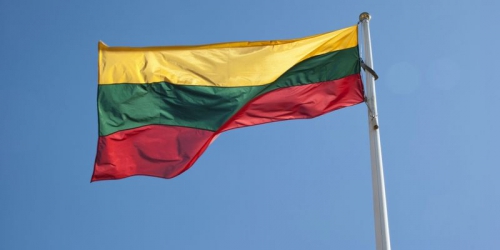
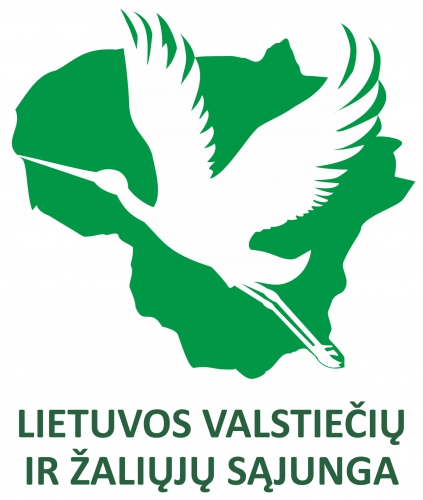 Avec 21,7% des voix, l’Union de la Patrie (Tevynes Sajunga - LKD) avait remporté légèrement le premier tour, avec 0.17% de plus que le parti centriste des Paysans et Verts (LVZS = Lietuvos Valstieciu ir Zaliuju Sajunga, ex LVLS). Il avait obtenu 20 sièges contre 19 pour ces derniers. Mais le vote uninominal a inversé la donne car le LVZS a obtenu 35 sièges contre seulement 9 pour le TS-LKD, obtenant en tout 54 sièges sur 140. La majorité est éloignée mais au sein d’une coalition de centre-droit, le LVZS sera en position de force, le TS-LKD devant se contenter de 29 sièges. A eux deux néanmoins, ils sont majoritaires.
Avec 21,7% des voix, l’Union de la Patrie (Tevynes Sajunga - LKD) avait remporté légèrement le premier tour, avec 0.17% de plus que le parti centriste des Paysans et Verts (LVZS = Lietuvos Valstieciu ir Zaliuju Sajunga, ex LVLS). Il avait obtenu 20 sièges contre 19 pour ces derniers. Mais le vote uninominal a inversé la donne car le LVZS a obtenu 35 sièges contre seulement 9 pour le TS-LKD, obtenant en tout 54 sièges sur 140. La majorité est éloignée mais au sein d’une coalition de centre-droit, le LVZS sera en position de force, le TS-LKD devant se contenter de 29 sièges. A eux deux néanmoins, ils sont majoritaires.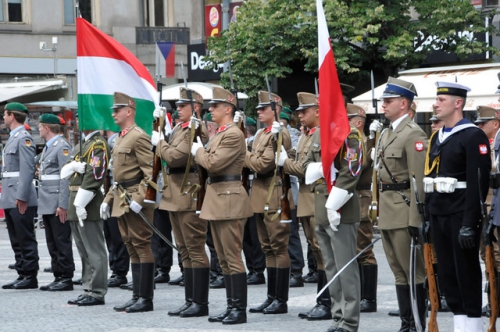
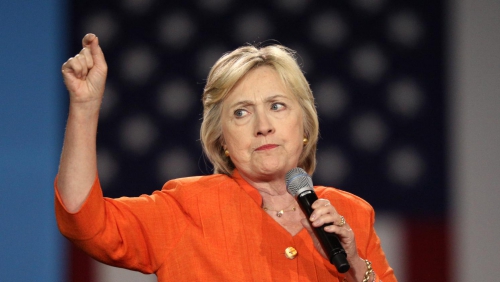
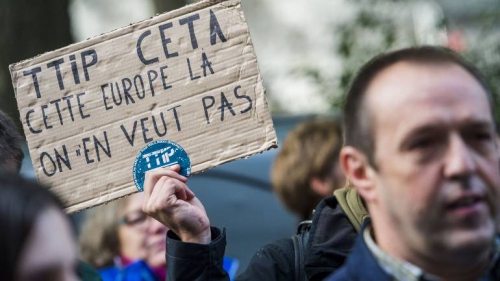
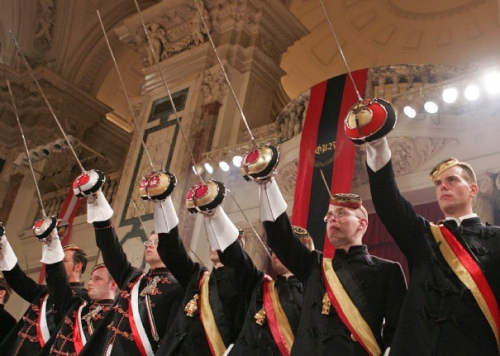
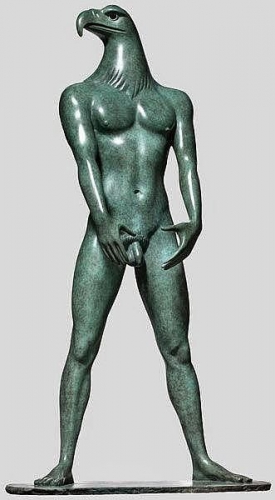 Tant que l'Union européenne se développait d’une manière relativement réussie, les eurosceptiques étaient plutôt une force politique marginale, sans être un concurrent pour les grands partis politiques soutenant l'intégration européenne. Début 2008, la crise économique, dont la cause est le fruit d’une série de facteurs internes et externes interdépendants, se répand dans le monde. Le principal facteur interne était la crise de la zone euro associée à divers indicateurs économiques du « noyau » européen représenté par l'Allemagne, la France, la Grande-Bretagne et la Scandinavie, et la « périphérie »7. « Le noyau » européen a alors été contraint de maintenir à flot les pays « périphériques » situés dans l'arc « Atlantique-Méditerranée », de l'Irlande à la Grèce.
Tant que l'Union européenne se développait d’une manière relativement réussie, les eurosceptiques étaient plutôt une force politique marginale, sans être un concurrent pour les grands partis politiques soutenant l'intégration européenne. Début 2008, la crise économique, dont la cause est le fruit d’une série de facteurs internes et externes interdépendants, se répand dans le monde. Le principal facteur interne était la crise de la zone euro associée à divers indicateurs économiques du « noyau » européen représenté par l'Allemagne, la France, la Grande-Bretagne et la Scandinavie, et la « périphérie »7. « Le noyau » européen a alors été contraint de maintenir à flot les pays « périphériques » situés dans l'arc « Atlantique-Méditerranée », de l'Irlande à la Grèce.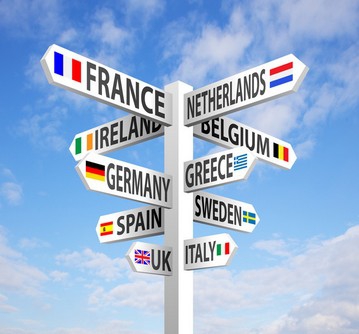 À la fin de 2010 les leaders européens tels que Angela MERKEL, la chancelière allemande, et David CAMERON, désormais l’ancien Premier ministre britannique, ont reconnu que les tentatives pour construire une société multiculturelle dans le continent ont échoué. Cependant, des moyens pratiques pour sortir de cette situation n'ont pas été proposés. Monsieur CAMERON a déclaré la nécessité de recourir au « libéralisme musclé »16 ce qui signifie en fait une continuation de l'ancienne politique non justifiée, mais par des méthodes encore plus forcées. Madame MERKEL a déploré le fait que les migrants ne soient pas particulièrement désireux d'intégrer la société allemande et d'apprendre l'allemand17. Malgré cela, à l’été de 2016, juste après les nouvelles attaques terroristes des islamistes en Europe, la chancelière allemande a confirmé qu'elle continuerait une politique de portes ouvertes aux migrants des pays musulmans18.
À la fin de 2010 les leaders européens tels que Angela MERKEL, la chancelière allemande, et David CAMERON, désormais l’ancien Premier ministre britannique, ont reconnu que les tentatives pour construire une société multiculturelle dans le continent ont échoué. Cependant, des moyens pratiques pour sortir de cette situation n'ont pas été proposés. Monsieur CAMERON a déclaré la nécessité de recourir au « libéralisme musclé »16 ce qui signifie en fait une continuation de l'ancienne politique non justifiée, mais par des méthodes encore plus forcées. Madame MERKEL a déploré le fait que les migrants ne soient pas particulièrement désireux d'intégrer la société allemande et d'apprendre l'allemand17. Malgré cela, à l’été de 2016, juste après les nouvelles attaques terroristes des islamistes en Europe, la chancelière allemande a confirmé qu'elle continuerait une politique de portes ouvertes aux migrants des pays musulmans18.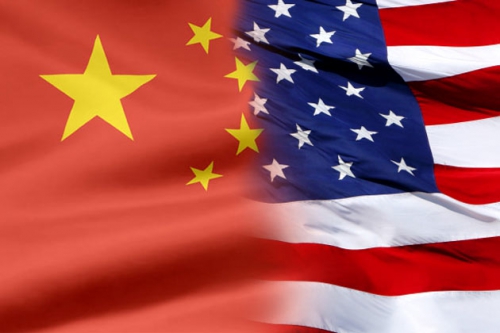

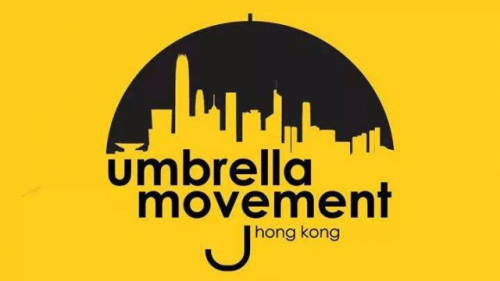



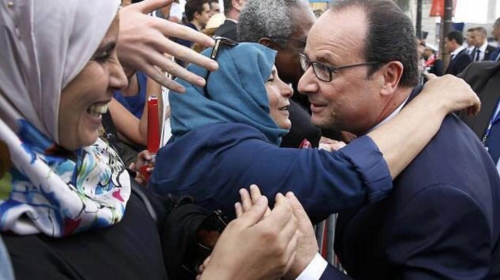
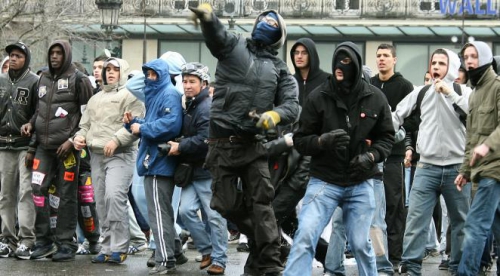
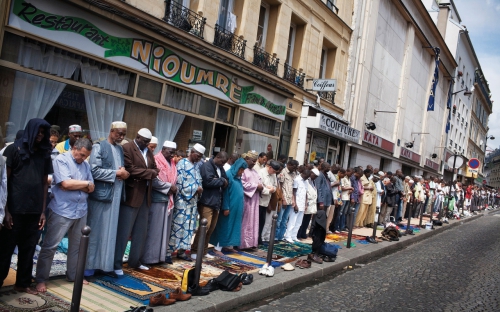
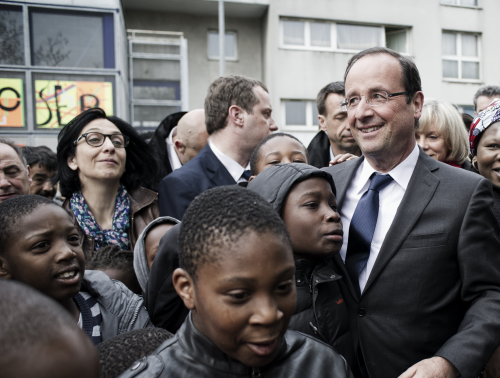
 Cependant, il ne faut pas voir dans ces dernières lignes une obsession pour la théorie du complot. Si le document dont vous venez de lire ici des extraits renforce l’idée que la France est sous influence américaine, c’est tout simplement parce que les Américains ne font qu’exploiter les béances qui caractérisent la société française. Tout comme la nature, la société a horreur du vide. Les Américains ont bien compris qu’il y avait un réel danger pour la France, et par suite pour leurs propres intérêts, à laisser ces béances s’aggraver.
Cependant, il ne faut pas voir dans ces dernières lignes une obsession pour la théorie du complot. Si le document dont vous venez de lire ici des extraits renforce l’idée que la France est sous influence américaine, c’est tout simplement parce que les Américains ne font qu’exploiter les béances qui caractérisent la société française. Tout comme la nature, la société a horreur du vide. Les Américains ont bien compris qu’il y avait un réel danger pour la France, et par suite pour leurs propres intérêts, à laisser ces béances s’aggraver.
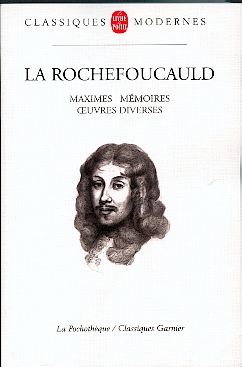 Gagnée par l’ivresse de cette hybris puritaine qui s’étend à des domaines politiques, esthétiques ou métaphysique où elle n’a que faire, cette morale débordante, cette griserie narcissique du Bien abstrait, envahit et subjugue les consciences et les entendements humains au point de les aveugler sur le beau et sur le vrai qui, par essence, ne sont jamais acquis mais toujours à conquérir et appartiennent tout autant aux réalités sensibles, au frémissement de l’immanence, qu’aux réalités intelligibles.
Gagnée par l’ivresse de cette hybris puritaine qui s’étend à des domaines politiques, esthétiques ou métaphysique où elle n’a que faire, cette morale débordante, cette griserie narcissique du Bien abstrait, envahit et subjugue les consciences et les entendements humains au point de les aveugler sur le beau et sur le vrai qui, par essence, ne sont jamais acquis mais toujours à conquérir et appartiennent tout autant aux réalités sensibles, au frémissement de l’immanence, qu’aux réalités intelligibles.

 Doneer Café Weltschmerz, we hebben uw steun hard nodig! NL23 TRIO 0390 4379 13 (Disclaimer: Wij betalen over uw gift in Nederland belasting)
Doneer Café Weltschmerz, we hebben uw steun hard nodig! NL23 TRIO 0390 4379 13 (Disclaimer: Wij betalen over uw gift in Nederland belasting)
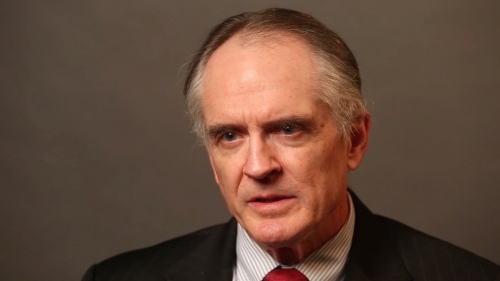
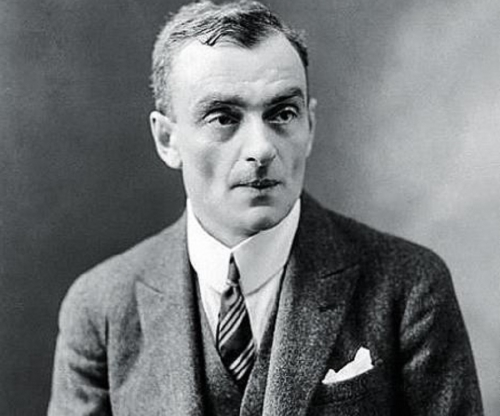
 Si le propre des grands poètes est de demeurer longtemps méconnus avant de nous advenir en gloires et ensoleillements sans doute est-ce qu'ils entretiennent avec la profondeur du temps une relation privilégiée. Leurs œuvres venues de profond et de loin tardent à nous parvenir. Elles sont ce « Printemps revenu de ses lointains voyages », - revenu vers nous avec sa provende d'essences, d'ombres bleues, de pressentiments.
Si le propre des grands poètes est de demeurer longtemps méconnus avant de nous advenir en gloires et ensoleillements sans doute est-ce qu'ils entretiennent avec la profondeur du temps une relation privilégiée. Leurs œuvres venues de profond et de loin tardent à nous parvenir. Elles sont ce « Printemps revenu de ses lointains voyages », - revenu vers nous avec sa provende d'essences, d'ombres bleues, de pressentiments. 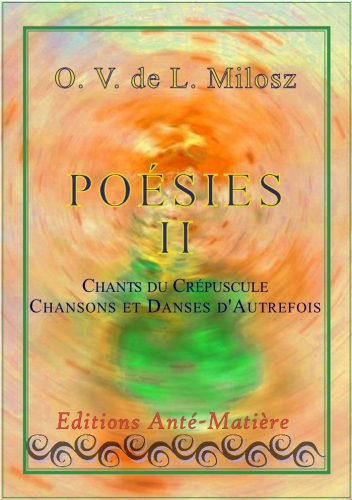 Ce temps n'est pas un temps linéaire, le temps de la succession, le temps historique mais le temps métahistorique, s'inscrivant dans une hiéro-histoire: c'est là tout le propos des Arcanes de Milosz. Ce savoir ne sera pas conquête arrogante, mais retour en nous de l'humilité, non pas savoir qui planifie, qui arraisonne le monde par outrecuidance, par outrance, mais retour à la simple dignité des êtres et des choses, des pierres, des feuillages, des océans, des oiseaux.
Ce temps n'est pas un temps linéaire, le temps de la succession, le temps historique mais le temps métahistorique, s'inscrivant dans une hiéro-histoire: c'est là tout le propos des Arcanes de Milosz. Ce savoir ne sera pas conquête arrogante, mais retour en nous de l'humilité, non pas savoir qui planifie, qui arraisonne le monde par outrecuidance, par outrance, mais retour à la simple dignité des êtres et des choses, des pierres, des feuillages, des océans, des oiseaux.  Certains hommes, plus que d'autres, par l'appartenance à une caste intérieure, sont prédisposés à entrer en relation avec le monde intermédiaire, là où apparaissent les Anges, les visions, les dieux. Ce mundus imaginalis, ce monde imaginal, fut la véritable patrie de Milosz comme elle fut celle de Gérard de Nerval ou de Ruzbéhân de Shîraz. Ce monde visionnaire n'a rien d'abstrus, de subjectif ni d'irréel. Il est, pour reprendre le paradoxe lumineux d'Henry Corbin « un suprasensible concret », - non pas la réalité, qui n'est jamais qu'une représentation, mais le réel, ensoleillé ou ténébreux, le réel en tant que mystère, source d'effroi, d'étonnement ou de ravissements sans fins.
Certains hommes, plus que d'autres, par l'appartenance à une caste intérieure, sont prédisposés à entrer en relation avec le monde intermédiaire, là où apparaissent les Anges, les visions, les dieux. Ce mundus imaginalis, ce monde imaginal, fut la véritable patrie de Milosz comme elle fut celle de Gérard de Nerval ou de Ruzbéhân de Shîraz. Ce monde visionnaire n'a rien d'abstrus, de subjectif ni d'irréel. Il est, pour reprendre le paradoxe lumineux d'Henry Corbin « un suprasensible concret », - non pas la réalité, qui n'est jamais qu'une représentation, mais le réel, ensoleillé ou ténébreux, le réel en tant que mystère, source d'effroi, d'étonnement ou de ravissements sans fins. 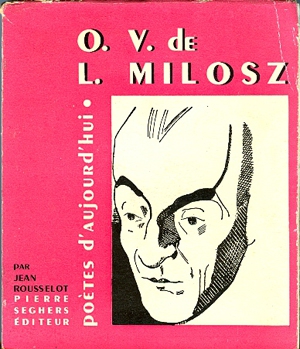 « Je regarde, écrit Milosz, et que vois-je ? La pureté surnage, le blanc et le bleu surnagent. L'esprit de jalousie, le maître de pollution, l'huile de rongement aveugle, lacrymale, plombée, dans la région basse est tombé. Lumière d'or chantée, tu te délivres. Viens épouse, venez enfants, nous allons vivre ! » A ce beau pressentiment répond, dans le même poème la voix de Béatrice: « Montjoie Saint-Denis, maître ! Les nôtres, rapides, rapides, ensoleillés ! Au maître des obscurs on fera rendre gorge. Vous George, Michel, claires têtes, saintes tempêtes d'ailes éployées, et toi si blanc d'amour sous l'argent et le lin... »
« Je regarde, écrit Milosz, et que vois-je ? La pureté surnage, le blanc et le bleu surnagent. L'esprit de jalousie, le maître de pollution, l'huile de rongement aveugle, lacrymale, plombée, dans la région basse est tombé. Lumière d'or chantée, tu te délivres. Viens épouse, venez enfants, nous allons vivre ! » A ce beau pressentiment répond, dans le même poème la voix de Béatrice: « Montjoie Saint-Denis, maître ! Les nôtres, rapides, rapides, ensoleillés ! Au maître des obscurs on fera rendre gorge. Vous George, Michel, claires têtes, saintes tempêtes d'ailes éployées, et toi si blanc d'amour sous l'argent et le lin... »  Contraires à l'œuvre et à la prière, de titanesques forces sont au travail pour nous distraire et nous soumettre. L'idéal guerroyant, chevaleresque, opposera au coup de force permanent du monde moderne, non pas une force contraire, qui serait son image inversée et sa caricature, mais une persistante douceur et d'infinies nuances.
Contraires à l'œuvre et à la prière, de titanesques forces sont au travail pour nous distraire et nous soumettre. L'idéal guerroyant, chevaleresque, opposera au coup de force permanent du monde moderne, non pas une force contraire, qui serait son image inversée et sa caricature, mais une persistante douceur et d'infinies nuances.  Le Noble Voyageur s'éloigne pour revenir. Il quitte la lettre pour cheminer vers l'aurore du sens, - qui viendra, en rosées alchimiques, se reposer sur la lettre pour l'enluminer. « Le monde, disaient les théologiens du Moyen-Age, est l'enluminure de l'écriture de Dieu ». Le voyage initiatique, la quête du Graal, qui n'est autre que la coupe du ciel retournée sur nos têtes, débute par l'expérience du trouble, de l'inquiétude, du vertige: « J'ai porté sur ma poitrine, écrit Milosz, le poids de la nuit, mon front a distillé une sueur de mur. J'ai tourné la roue d'épouvante de ceux qui partent et de ceux qui reviennent. Il ne reste de moi en maint endroit qu'un cercle d'or tombé dans une poignée de poussière. »
Le Noble Voyageur s'éloigne pour revenir. Il quitte la lettre pour cheminer vers l'aurore du sens, - qui viendra, en rosées alchimiques, se reposer sur la lettre pour l'enluminer. « Le monde, disaient les théologiens du Moyen-Age, est l'enluminure de l'écriture de Dieu ». Le voyage initiatique, la quête du Graal, qui n'est autre que la coupe du ciel retournée sur nos têtes, débute par l'expérience du trouble, de l'inquiétude, du vertige: « J'ai porté sur ma poitrine, écrit Milosz, le poids de la nuit, mon front a distillé une sueur de mur. J'ai tourné la roue d'épouvante de ceux qui partent et de ceux qui reviennent. Il ne reste de moi en maint endroit qu'un cercle d'or tombé dans une poignée de poussière. » 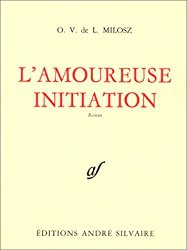 Le propre de la poésie est d'honorer le silence, - ce silence qui est en amont, antérieur, ce silence d'or qui tisse de ses fils toute musique, ce silence que les Muses savent écouter et qu'elles transmettent à leurs interprètes afin de faire entendre la vox cordis, la voix du cœur, qui vient de la profondeur du Temps.
Le propre de la poésie est d'honorer le silence, - ce silence qui est en amont, antérieur, ce silence d'or qui tisse de ses fils toute musique, ce silence que les Muses savent écouter et qu'elles transmettent à leurs interprètes afin de faire entendre la vox cordis, la voix du cœur, qui vient de la profondeur du Temps. 
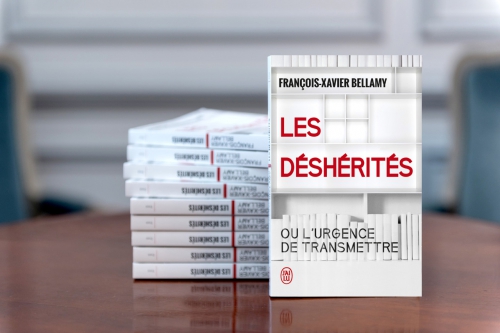
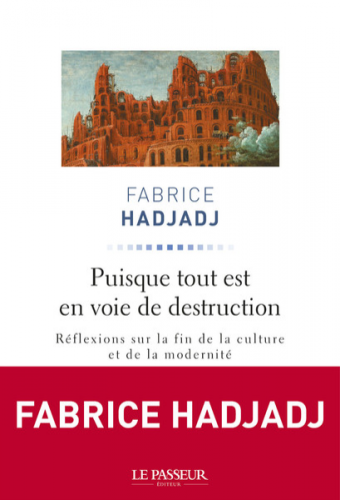 Or, on remarque qu’éduquer un élève pour qu’il développe son humanité, et ceci via sa culture, n’est absolument pas le but recherché par la logique éducative libérale. En effet, celle-ci est soumise à une contrainte évidente : pour former des consommateurs dociles, il faut développer leurs instincts et pulsions égoïstes – toutes choses inverses de l’éducation, de la raison, de l’humanité, de la culture en somme.
Or, on remarque qu’éduquer un élève pour qu’il développe son humanité, et ceci via sa culture, n’est absolument pas le but recherché par la logique éducative libérale. En effet, celle-ci est soumise à une contrainte évidente : pour former des consommateurs dociles, il faut développer leurs instincts et pulsions égoïstes – toutes choses inverses de l’éducation, de la raison, de l’humanité, de la culture en somme.
 Lof der zotheid van Erasmus
Lof der zotheid van Erasmus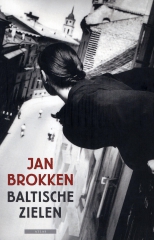 Baltische zielen van Jan Brokken
Baltische zielen van Jan Brokken Een heel leven voor zich van Romain Gary
Een heel leven voor zich van Romain Gary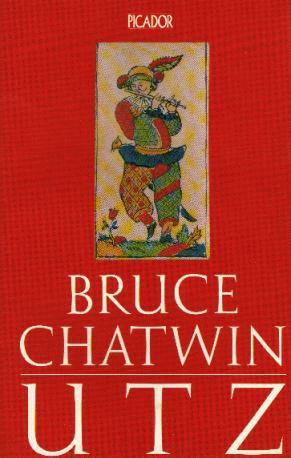 Utz van Bruce Chatwin
Utz van Bruce Chatwin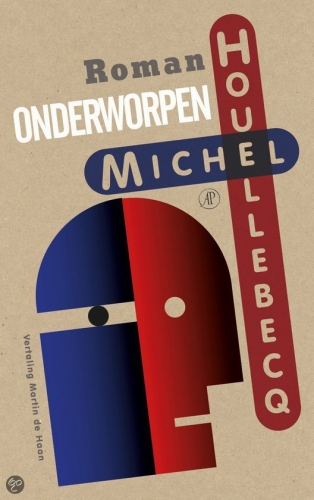 Onderworpen van Michel Houellebecq
Onderworpen van Michel Houellebecq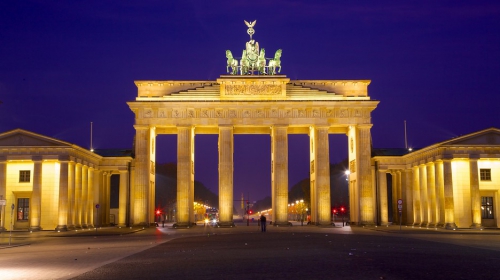
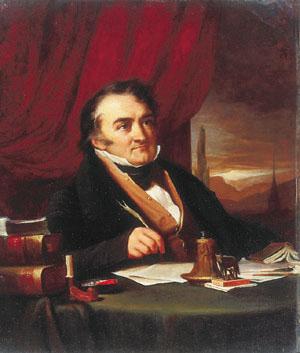 Baroness Thatcher’s view of humanity as a sum of particles and atoms is in stark contrast with the sense of social solidarity expressed by the Chinese nurse attending a child pulled from the ruins of a school, after the 2008 Sichuan earthquake. While being interviewed by an American chain she was asked: - And what is your name? - My name is China.
Baroness Thatcher’s view of humanity as a sum of particles and atoms is in stark contrast with the sense of social solidarity expressed by the Chinese nurse attending a child pulled from the ruins of a school, after the 2008 Sichuan earthquake. While being interviewed by an American chain she was asked: - And what is your name? - My name is China.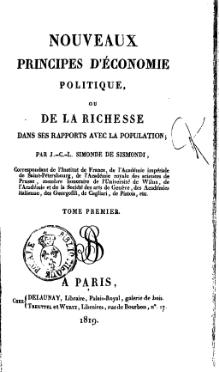 Sismondi is often listed as the first socialist philosopher, because he discerned the surplus value (mieux value) of salaried labour, because he spoke about class struggle and requested state intervention to protect workers, because he proposed a minimum wage, job security and workers protection through sickness and old age, and still other social measures. All of them are today part of a socialist platform, but he addressed even more modern concerns, like the way to fairly distribute the progress on science and technology, which tends to harm employment and job security and exclusively favours capital owners.
Sismondi is often listed as the first socialist philosopher, because he discerned the surplus value (mieux value) of salaried labour, because he spoke about class struggle and requested state intervention to protect workers, because he proposed a minimum wage, job security and workers protection through sickness and old age, and still other social measures. All of them are today part of a socialist platform, but he addressed even more modern concerns, like the way to fairly distribute the progress on science and technology, which tends to harm employment and job security and exclusively favours capital owners.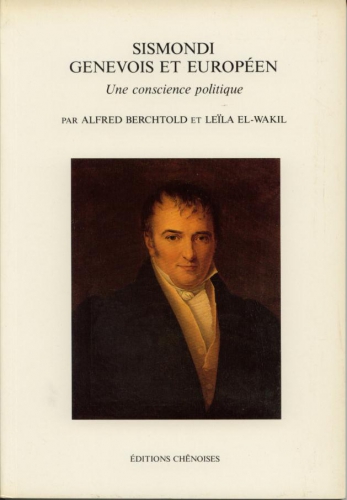 As all the historicists, Sismondi objects that once applied to the real economy the Anglo-Saxon theories cause economic distortions and tend to concentrate wealth on an elite, at the expense of the rest of society. As them, he believes the social and economic cost of such unbalance to be immense, because its inherent unfairness causes contagious crisis that disrupts and sets back economic growth at both, national and international level. They all agree in the paramount importance of a closer balance in incomes, because as Sismondi said “ The salary given to a worker has the same effect as the seed entrusted to soil”
As all the historicists, Sismondi objects that once applied to the real economy the Anglo-Saxon theories cause economic distortions and tend to concentrate wealth on an elite, at the expense of the rest of society. As them, he believes the social and economic cost of such unbalance to be immense, because its inherent unfairness causes contagious crisis that disrupts and sets back economic growth at both, national and international level. They all agree in the paramount importance of a closer balance in incomes, because as Sismondi said “ The salary given to a worker has the same effect as the seed entrusted to soil”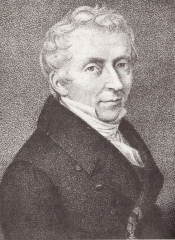
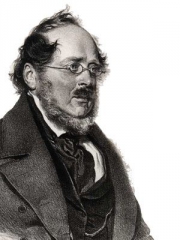
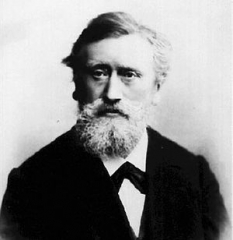
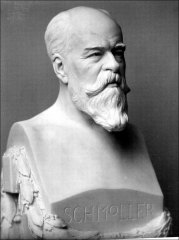
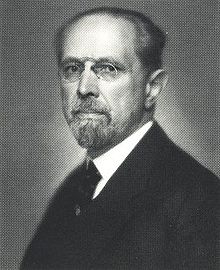
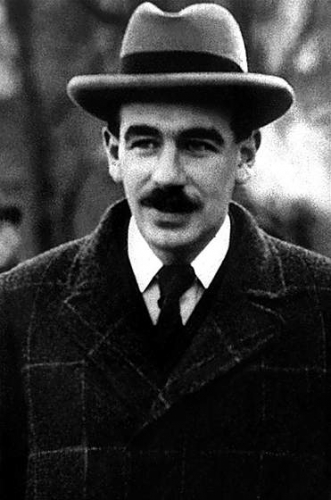
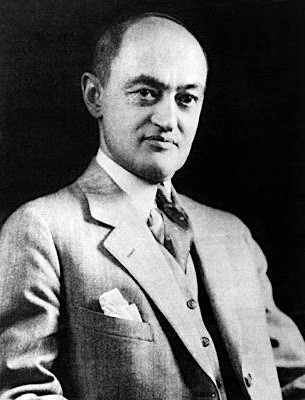
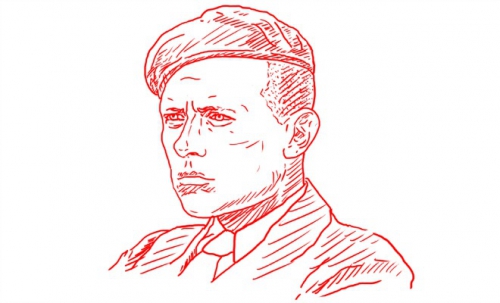
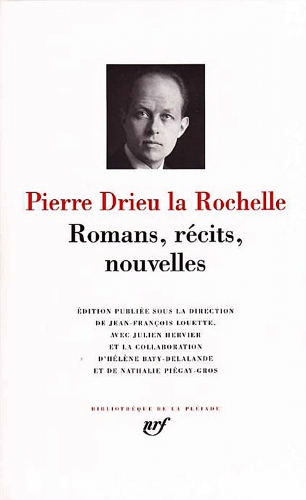 Jamais Drieu ne brigua de mandat électif – son antiparlementarisme l’en empêchait - mais son engagement politique est manifeste. Membre du
Jamais Drieu ne brigua de mandat électif – son antiparlementarisme l’en empêchait - mais son engagement politique est manifeste. Membre du 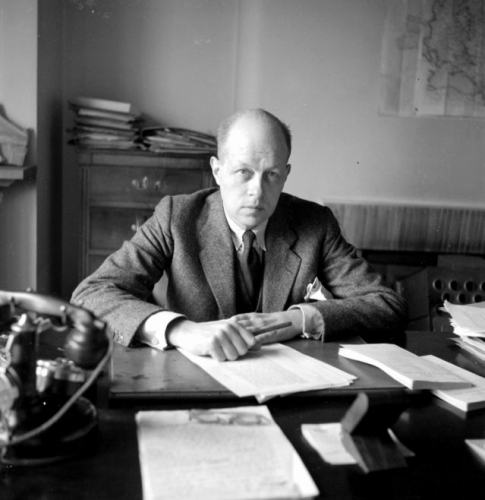
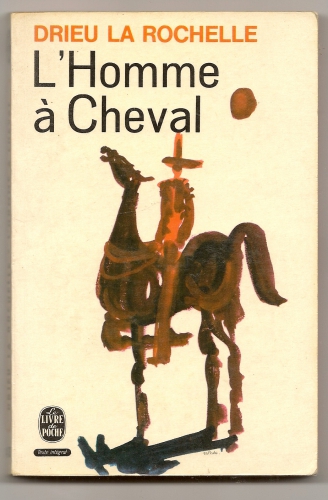 Stendhal, Balzac, Zola...: Drieu n’ignore pas le 19ème siècle mais de ces références il ne garde que des «lambeaux, et à la limite de la parodie». Pourtant, ce qui fait d’abord la force, l’attrait de ses textes, c’est qu’il s’agit de grands romans d’amour.
Stendhal, Balzac, Zola...: Drieu n’ignore pas le 19ème siècle mais de ces références il ne garde que des «lambeaux, et à la limite de la parodie». Pourtant, ce qui fait d’abord la force, l’attrait de ses textes, c’est qu’il s’agit de grands romans d’amour.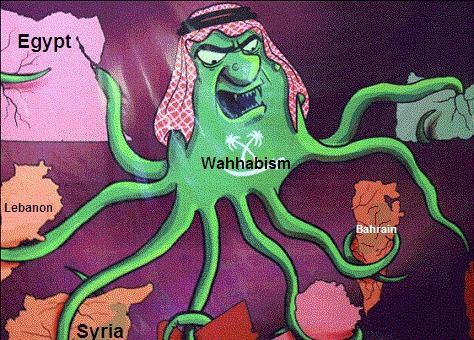
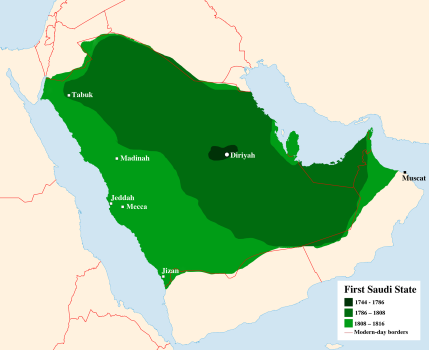
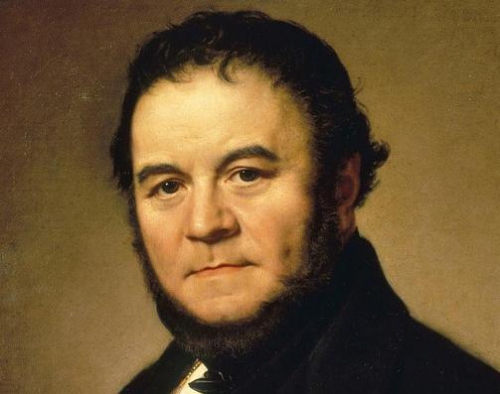


 Sinngemäße Aussagen von Zeitgenossen, die aus anderen Parteien nach langer Mitgliedschaft, nach kleinen, mittleren und großen Parteikarrieren ausgetreten sind, gibt es ohne Zahl. Sie sagen im Kern alle: Meine frühere Partei ist
Sinngemäße Aussagen von Zeitgenossen, die aus anderen Parteien nach langer Mitgliedschaft, nach kleinen, mittleren und großen Parteikarrieren ausgetreten sind, gibt es ohne Zahl. Sie sagen im Kern alle: Meine frühere Partei ist 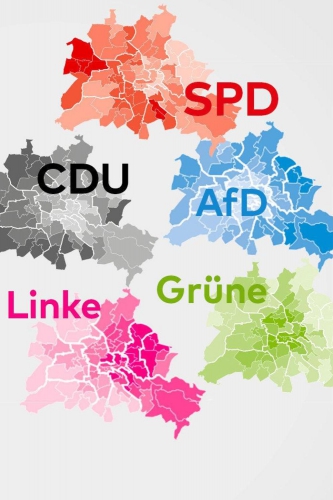 Verwaltungen und Bürokratien allgemein, staatlich wie privat, stellten Studien schon vor...
Verwaltungen und Bürokratien allgemein, staatlich wie privat, stellten Studien schon vor...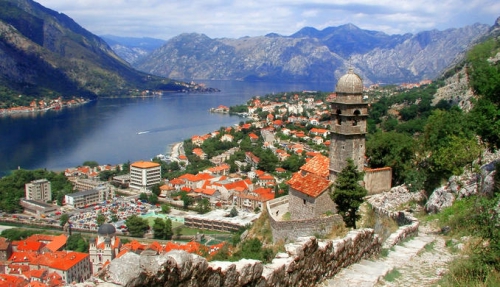
 Le Front Démocratique, mené par Mandic, coalition hétéroclite à dominante nationale-conservatrice, libérale et néanmoins pro-européenne, a priori toutefois nettement plus favorable à la Russie de Poutine que le DPS, avec 20,6% des voix et 18 sièges (-2), échoue une fois de plus à menacer son adversaire principal.
Le Front Démocratique, mené par Mandic, coalition hétéroclite à dominante nationale-conservatrice, libérale et néanmoins pro-européenne, a priori toutefois nettement plus favorable à la Russie de Poutine que le DPS, avec 20,6% des voix et 18 sièges (-2), échoue une fois de plus à menacer son adversaire principal. 
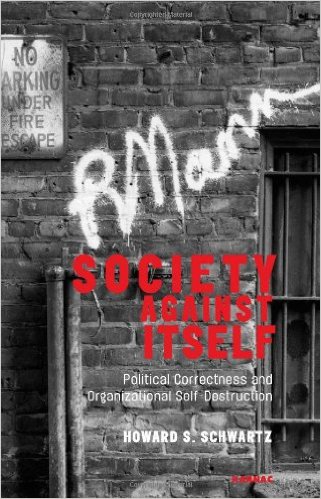
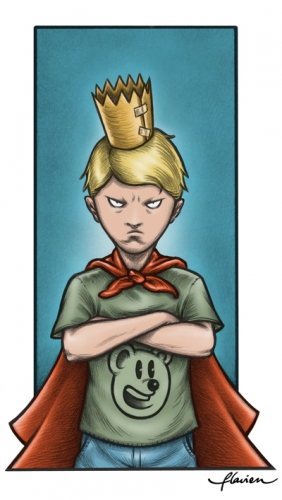 Les enfants naissent centrés sur leur moi, principalement parce qu’ils ont « un moi », comme l’a fort bien montré G.K. Chesterton. Et de même que les langues sont mieux apprises dans le jeune âge, la moralité, la tolérance à la critique et les limites portées à son propre désir sont mieux intégrées pendant les premières années. C’est ce que dit le proverbe anglais : « Comme le plant est courbé pousse l’arbre »… Un enfant dont l’énergie naturelle et les instincts tyranniques ne sont pas modérés pourrait ne jamais grandir sans s’en affranchir. Il ne faut pas s’étonner qu’une telle personne développe une forte tendance narcissique, intolérante à la moindre critique et exigeant une validation permanente de sa propre image déifiée.
Les enfants naissent centrés sur leur moi, principalement parce qu’ils ont « un moi », comme l’a fort bien montré G.K. Chesterton. Et de même que les langues sont mieux apprises dans le jeune âge, la moralité, la tolérance à la critique et les limites portées à son propre désir sont mieux intégrées pendant les premières années. C’est ce que dit le proverbe anglais : « Comme le plant est courbé pousse l’arbre »… Un enfant dont l’énergie naturelle et les instincts tyranniques ne sont pas modérés pourrait ne jamais grandir sans s’en affranchir. Il ne faut pas s’étonner qu’une telle personne développe une forte tendance narcissique, intolérante à la moindre critique et exigeant une validation permanente de sa propre image déifiée. Dernière remarque. Le professeur Schwartz relève une observation de l’éditorialiste Megan McArdle. Celle-ci a écrit : « Les étudiants d’aujourd’hui n’expriment pas leurs demandes selon des critères de moralité mais dans le jargon de la sécurité. Ils ne vous demandent pas d’arrêter de leur commenter des livres traitant de questions complexes parce que la pensée exprimée est fausse, mais parce qu’ils les considèrent comme dangereux et ne devraient pas être abordés sans de sévères mises en garde. Ils ne veulent pas faire taire un orateur parce que ses idées sont mauvaises mais parce qu’il représente un danger immédiat pour la communauté universitaire. » Raison unique à cet état de fait : ces étudiants ne tiennent aucun compte des critères de moralité.
Dernière remarque. Le professeur Schwartz relève une observation de l’éditorialiste Megan McArdle. Celle-ci a écrit : « Les étudiants d’aujourd’hui n’expriment pas leurs demandes selon des critères de moralité mais dans le jargon de la sécurité. Ils ne vous demandent pas d’arrêter de leur commenter des livres traitant de questions complexes parce que la pensée exprimée est fausse, mais parce qu’ils les considèrent comme dangereux et ne devraient pas être abordés sans de sévères mises en garde. Ils ne veulent pas faire taire un orateur parce que ses idées sont mauvaises mais parce qu’il représente un danger immédiat pour la communauté universitaire. » Raison unique à cet état de fait : ces étudiants ne tiennent aucun compte des critères de moralité.